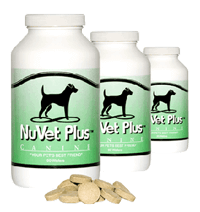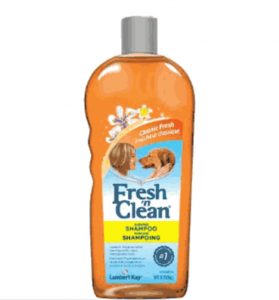We have lots of great information and important puppy care advice on this page. Please try to follow the advice here to the best of your ability. Toy and designer breeds are very sensitive in the early stages of their development. They depend entirely on you to help them through the whole process until maturity and beyond.
Toy Breed Information
You will receive a 2-page guide that I have written to inform you of some of the special needs that a tiny toy puppy might have. I have included some information on hypoglycemia (low blood sugar) and signs to look for. Don’t be frightened by this! I just want to let you know, in the very rare case that your puppy gets stressed and needs a nutritional boost!
It is a necessity that you have on hand a high calorie/sugar supplement. I recommend Nutri-Cal (also called EnerCal or EnerGel). This is a concentrated palatable form of nutrients, sugar and calories for the little ones. Also, please provide your new puppy with an electrolyte formula (i.e. Clear pedialyte) and be sure it drinks very soon after arrival.
If the puppy does not drink, it may be necessary to use a syringe or dropper to carefully administer the pedialyte. Puppies under 4 lbs should be given some NutriCal (offer it to them to lick off your finger, or carefully open the mouth and “wipe” onto their tongue) upon arrival.
Important Information About the Care of your New Arrival
Your puppy has had a good appetite and has been playful and carefree at our home. There will be a transition period when he/she arrives at your home. Everything is new and exciting; new sounds, new smells, new sights and new people! It is very important to realize your new tiny puppy will take some adjusting, and might need some special care in getting him/her settled in. Any of our puppies that are less than 4 lbs are considered at risk of running low on fuel, especially the first week after arrival. There are several important things that must be done:
- Keep stimulation to a minimum — don’t let your new puppy run and romp excessively (10 minutes can be excessive for these little ones); this includes running around and following you everywhere. They are like little hummingbirds, their energy stores are small, and their heart and desire to be a part of everything can overwhelm them. Try to minimize visitors and don’t take the puppy out and about the first week of settling in (excluding the Vet visit!).
- Provide electrolyte water (Puppy Aid or plain Pedialyte) at all times the first week. And be sure the puppy isn’t held so much that it doesn’t get the chance to eat and nibble.
- Monitor food intake. Should he/she not seem very interested in the dry food I’ve provided, you can:
to a small amount of dry food add about a half teaspoon of baby pureed chicken meat (in the jar) with a little warm water to entice the appetite. Also, they tend to like the following canned/packaged wet foods: Purina ONE Smartblend healthy puppy lamb & rice, Little Caesar Puppy; Pedigree chicken, ground; Royal Canin Puppy Mousse. If you think your puppy may need an energy source, you can add a little Karo syrup, molasses or Nutri-drops or Nutri-Cal to the food.
If ever you must hand feed (this does not happen often, but it can and I want you to know what to do) : mix a few tablespoons of human baby rice cereal with a little warm water or pedialyte, and add a little chicken or lamb baby food and sugar energy source (as above). Make it a little soupy if you need to use a dropper or syringe to feed. Place food in the corner of the mouth and to the back of the tongue, tipping the head slightly up so the puppy will swallow and not spit it out.
Recipe for dehydration
(Especially helpful if loose stool or diarrhea is present: works like a glucose-based oral solution.)
- 1/2 cup dry instant baby rice cereal
- 2 cups water (filtered or purified is best)
- 1/4 tsp. salt
- Feed free choice or administer by mouth with a syringe or dropper.
Nutrition and Feeding
We believe in providing our animals with the best nutrition for optimal health, strong immune systems, and proper growth or maintenance. Each breed we raise has its own needs, and even some individuals within a breed may need a slightly different diet.
We feed NutriSource and Diamond Naturals . The formulas have glucosamine for joint health, balanced Omega 3 and 6 fatty acids, and a special digestive enzyme which aids in optimum digestion. Toy breed foods are more densely packed with nutrients so that even the small appetites still receive good nutrition. The food is manufactured under strict guidelines, and the plant is inspected by the American Baking Institute (which inspects human bakeries!).
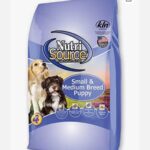
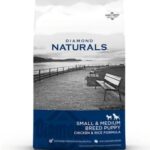
Our toy breeds are started on NutriSource small\medium breed Puppy food and Diamond Naturals small/medium breed puppy food combined (which is what we send them home with). This is fed dry, but if a puppy needs to be enticed to eat, we might add a little warm water and some human baby chicken or turkey baby food from the jar (just a half teaspoon!) or Royal Canin Puppy Mousse (great stuff!). We may also entice the little ones with small bits of cooked chicken or turkey sliced lunch meat. But the puppies have dry kibble at all times, and are eating well when we send them to their new home.
At times, we also add yogurt or cottage cheese. Yogurt (natural style, non-processed) provides extra calcium and also the “good bacteria” which aids digestion. Cottage cheese adds calcium and protein, in an easily digestible form.
If you want to give your puppy an occasional egg, please cook it first (scrambled and microwaved or pan-fried or boiled). Raw eggs are not good for a puppy!
Puppies should be fed 2-4 times per day. The smaller the puppy, the more frequent the feedings. We feed “free-choice”, and allow the puppies to nibble whenever they want to. I recommend this for at least a week or two when they are in their new homes, too.
If your puppy seems disinterested in its food at first, you can entice it by adding a little warm water to the dry food, or add a half-teaspoon of human baby food, the pureed chicken or turkey meat in the small jar, with a little warm water or pedialyte.
Feeding a High-Quality Food Saves You Money
Please check out NutriSource, and if you plan to change dog foods, check out Dog Food Advisor for an unbiased food rating.
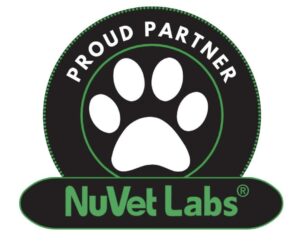
We use and recommend the NuVet Plus vitamins. This is a natural, full spectrum supplement that will boost your puppy’s (or dog’s) immune system and help him or her lead a healthier, longer life. These are not sold in stores, but can be purchased through private distributors such as myself. You can purchase online directly at the NuVet website, by using the order form or by calling 800-474-7044 with the purchase code 30431.
Saving just one major trip to the vet could pay for more than a lifetime supply of NuVet Plus
NOTE: This product is Not available to the general public without an Order Code supplied by your Pet Professional (ME!)
For more information on NuVet Plus, you can visit their website.
Microchip Implantation
This is a wonderful way to permanently identify your pet. The small, safe microchip is implanted under the skin between the shoulder blades. It is completely safe and harmless. Should your pet ever get separated from you or slip out of your home or yard, you can be safely reunited when this chip is scanned and you can then be contacted.
We offer the Microchip implant as a puppy plus, at no cost to you. There is a fee for registering the microchip for life with a global recovery database. To read more visit Microchip ID Systems.
Importance and Protection by Spaying and Neutering
A female puppy spayed before her first heat cycle can expect never to develop a mammary tumor of any kind. The incidence of tumor development in this group is nearly zero.
If she is allowed to experience one heat cycle before spaying, the incidence rises to 7% (still quite low).
If she is allowed to experience more than one heat cycle, the risk is driven up to one in four.
- Since most female dogs come into heat the first time before age one year and breeding an immature female dog is not recommended, this means one must generally choose between a litter of puppies or mammary cancer prevention.
- Because mammary tumors are promoted by female hormones, spaying at any age is helpful in tumor prevention. Just because a female dog is in the high-risk group, that does not mean it is too late to reap benefit from spaying. Sadly, a number of older unspayed dogs develop uterine problems, and this can be life-threatening.
- Males benefit too from neutering by eliminating the possibility of testicular cancer.
- Neutered males, if neutered before leg-lifting begins, generally do not begin territorial marking, and lose the desire to seek out females in heat. Neutering also helps against climbing, digging or forcing their way out of the house and yard to seek after females.
Crate Training
We do NOT advocate using a crate day & night. Keeping a young and growing puppy confined too many hours per day will be both mentally and physically detrimental. We use and recommend an exercise pen (can place crate inside as the bed area). These can be purchased online for less than $50
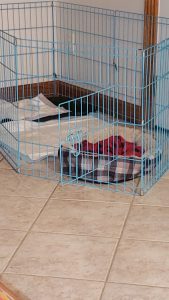 .
.
The crate is a very useful training tool. We need to view the crate as the puppy’s den or secure bed. It is not a place to put a pet that misbehaves or has had an accident. The crate is a comfort zone and a place that your pet can call his own. The fold-up wire crate is useful, especially if you will be traveling. A color coordinated fabric or blanket can make it blend nicely with your decor.
To prevent problems, crate training a puppy must be based on a canine’s natural tendencies. They like to bed down in a sheltered, den-like atmosphere, be in the presence of others (littermates, mom or you!), and they learn through association.
The proper crate size should allow an adult to stand up and turn around comfortably. Wire crates allow good ventilation and allow it to see its surroundings. Plastic crates can also be used.
Start the puppy or dog out with positive associations to the crate: place the pet inside with a treat. You might also offer a meal or more inside the crate. Be sure no collar or tags can become entangled in the crate. Start with short intervals inside the crate.
Do not speak the dog’s name, or offer a soft voice to soothe a crying, whining or barking pet. This only reinforces the behavior. A sharp rap of a newspaper on the door, or shaking a can with coins in it will tell the puppy that the behavior is not appropriate.
Only after the puppy has become silent, do you open the door and let it out. Do not praise or carry on with attention immediately after letting it out. This would reinforce the desirability to leave the crate. Use short stays of 10 minutes to begin with, and then increase the time to 30 minutes.
It is good to leave a comforting blanket, and a chew toy to preoccupy the puppy while in its den. By bedtime, the puppy should associate being quiet with being inside the crate. If the crate is in your bedroom and near you, the puppy does not feel alienated and separation stress.
It is vital that the puppy does not spend too much time cooped up in a crate! Undesirable tendencies can surface (such as pacing, bouncing, barking, soiling in crate, etc). It is better to set up a room (laundry room, bathroom, gated kitchen, service porch, etc) with a potty area (newspapers, potty pad or the new potty patch) rather than crate a puppy all day long and night time too.
Even if let out of the crate during the day, this is too much time spent in a crate without access to exercise and the ability to “do their business” should the urge hit them. Young Toy puppies are like babies and need stimulation, frequent potty breaks, and room to move about and play.
There is also a new style crate/potty area combo called a Puppy Apartment.
Crate training has several advantages
- The pup does not form the habit of eliminating in the house
- The pup can be put in its den when it cannot be monitored closely, eliminating destructive behavior
- A properly crate-trained pup will prefer its den and as it matures it will seek out its crate
- The pet always has a home away from home if you travel or visit a friend or relative
Potty Training
Potty training is one of the most difficult aspects of having a new baby puppy. But it doesn’t have to be so exasperating as long as you follow a few basic guidelines and give it your all the first month or two of your puppies arrival. Be consistent.
Choose a spot where you want your puppy to go potty, take him there every time, and come up with a word or phrase that you will use every time you want him to go. For instance, you might say go potty, then, when your dog does his business, follow it with good potty and praise.
He will learn to associate the word potty and the potty spot with doing his business. A Simple Solution Pee Spot Pheromone Stick will help your dog learn the right place to go potty. It is treated with pheromones that make your puppy’s potty place a more attractive spot for him.
You can also pre-spot your potty pad, potty patch or newspaper with some of the puppy’s urine (taken from the spot you didn’t want him to go!)
Crating a puppy when you are not around is the perfect way to keep him from going potty in the house and out of mischief. Dogs will instinctively not go potty in the same place where they sleep. Rule of thumb: How many months old a puppy is, he shouldn’t be expected to hold it more than that many hours.
So, two-month-old puppies shouldn’t have to wait longer than two hours; three-month-old puppies, three hours, and so on. This is, of course, only a generalization, as all puppies are different. Tiny Toy breeds have smaller bladders and need to go more frequently. No dog should be left crated for more than 6 hours, and not day and night.
Always reward your pup with tons of energetic praise (and some like to use a treat) when he goes potty outside. If you wait until you get inside to give him his treat, he will have already forgotten what he did to deserve it. Keep a treat pouch stocked with yummy treats right with his leash (and your clean up bags, if used). Even plain Cheerios, low-salt Cheez-its, etc. can be used.
Never let that puppy out of your sight! First of all, there are tons of dangerous things your pooch can get into when you’re not watching, so you should avoid the hazard altogether by keeping a constant eye on your puppy. Puppies all display similar behavior before they go potty — they sniff and root around, and turn in circles, and appear restless.
Keep an eye out for this behavior and take your pup outside before he ever has a chance to go potty in the house. Pet/baby gates are perfect for restricting puppies to one room where you can keep an eye on it.
Puppy pads (especially those pretreated with pheromones) are a great way to train your puppy to go in one specific spot indoors if you live in a high-rise apartment, if you live on a boat or don’t have a yard, or are somehow incapable of taking your puppy out every time it is necessary. The new Potty patches are also a unique and cost effective way to provide a potty spot indoors or on a deck.
It is very important that you clean up thoroughly if ever your puppy does have an accident. Just removing the stain usually isn’t enough, especially if you have carpets. Many cleaners take care of the odor to the point that humans don’t notice it, but those doggy noses can still tell that someone has gone potty in that spot. Left-behind smells are a cue to your dog that it is ok to go there again, and this will severely set back training.
An enzyme cleaner will literally eat away the organic compounds that your dog can smell and remove the stain as well, leaving you with a clean carpet or floor and no cues to your pooch that it’s ok to go potty in the house. Wal-mart and Sam’s Club carries Odo-Ban, a very good deodorizing cleaner which is made with safe botanicals.
Don’t take him inside right away. Your puppy will learn that as soon as he’s done going potty, outside time is over, and it’s back in the house, so he’ll stall as long as he can. If you always play with your puppy for a few minutes after he goes potty, he’ll learn to get it out of the way immediately so he can play with you.
A puppy shouldn’t be expected to make it more than one or two hours until he is around three months old. This means he might end up waking you up in the middle of the night. Do not be cranky with him just because you’re sleepy, it’s not his fault.
Putting your puppy on a regular feeding schedule, after the initial settling in, will aid in potty training. If you feed him at the same times every day, he will need to go potty around the same times too.
(Of course at the beginning, we encourage free-feeding until your puppy becomes comfortable in your home). Always take your puppy out immediately after he wakes up in the morning and after naps, as well as after every meal, play or training time, and last thing before bed.
I recommend fabric-style potty pads. Puppies tend to leave them alone (not so apt to carry them off and tear them to shreds!). It is also better for the environment, and you can wash and use them over and over. I have found two inexpensive places to purchase these: EZwhelp and HealthyKin. I also use disposable pads, newspapers and the potty patch (artificial grass in a plastic holder) in different areas of my home and puppy nursery. The puppies get used to several methods, so the transition to what you wish to use should be a breeze!
Grooming
The rule of thumb is to bathe your puppy as infrequently as you can! Keeping the natural oils in the coat helps create healthy skin and hair and will ultimately make it easier to comb the hair coat.
The main hair grooming and nail trimming tools I use:
- A soft wire slicker
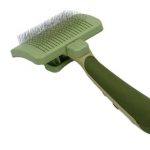 & stainless fine/medium comb
& stainless fine/medium comb
- Human nail trimmers for small nails, and these nail trimmers on adults
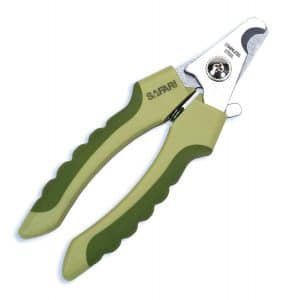
- Pin brush/soft brush combo (for Frenchies)
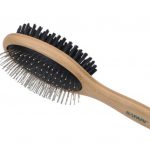
I also use and recommend Lambert-Kay Fresh N Clean shampoo and conditioner. They also make a nice whitening shampoo.
 Summer Time means more access to fruits and veggies! There are many that are good for dogs, some that should be avoided~Follow this link to learn more: http://www.akc.org/expert-advice/nutrition/natural-foods/fruits-vegetables-dogs-can-and-cant-eat/
Summer Time means more access to fruits and veggies! There are many that are good for dogs, some that should be avoided~Follow this link to learn more: http://www.akc.org/expert-advice/nutrition/natural-foods/fruits-vegetables-dogs-can-and-cant-eat/
Tear Stain Removal
Causes for Tear Stains – Shallow eye sockets, eyelids that turn inward, hair growth around the eyes or blocked tear drainage holes may cause tear stains on your dog or cat. Tears stains on white dogs, no matter what type of breed they are, may occur more often than on any other type of breed. Light-colored fur stains more easily and dogs with long hair on their face may be more prone to excessive tearing.
You should make sure your dog doesn’t have a tear duct obstruction (blockage) and have corrected the food and water issue first, so he doesn’t keep getting tear stains. After all if you treat the tear stains to remove them while at the same time you feed a food that causes tear stains, you won’t gain anything.
Try the least invasive of the methods below first, give them 2-4 weeks to work, and then if you are not satisfied go to another method of treatment. Do not use multiple treatments at the same time. Always have your vet give the dog a complete exam to rule out any serious eye condition first before trying anything else. The commercial products just don’t work very well, so it is best just to forget about them unless you have a very mild case of stain.
TUMS
If you need to change the pH of your dogs system to aid in preventing yeast or infection, then TUMS is primarily a source of Calcium, known as an antacid formulated as 500 mg Calcium Carbonate. Giving your Bulldog 1/2 of the Fruit flavored variety twice a day (toy breeds 1/8-1/4 depending upon size) will help change the pH of the tears. This will change the tears’ environment and can help make it hostile for the continued growth of yeast and bacteria.
White Vinegar
A teaspoon of white cider vinegar can be added to your dogs drinking water to control new tear stains. It may take a while for your dog to decide to drink this water so start with a little less and gradually increase the amount of vinegar. Vinegar works much like TUMS in that it changes the pH of the drinking water. Changing the pH of your dog slightly will do wonders in the tear stain war and help eliminate bacteria and deep stain color and prevent yeast build up and is best used as a prevention once you have the tear stains removed or nearly removed. This will help for the future of the tear stains and make them a minimum occurrence.
Milk of Magnesia, Corn Starch, and Peroxide (for making a cleansing paste to apply to the fur)
Use equal volume of MOM (plain white) and peroxide, and then use the corn starch to make a good paste; put on and work well into the stained area and let dry 4 hours. Wash out, condition well. Keep doing this for several days until tear staining is gone, although I would recommend skipping a day or two between applications if possible. Apply a thin coat of Desitin diaper rash ointment after the area is washed out and dry. If your dog has heavy stains then do this for 3 days in a row, then skip every other day. This is a very old tried and true recipe.
Corn Flour, Water and a Drop of Bleach (homemade)
Take 2 teaspoons of corn flour, add a few drops of boiling water and mix to a paste. Add 1 single drop of plain bleach. Mix again. Allow the mixture to cool down and apply to the tear stain area. Allow to dry (10 minutes), wait 1 hour and remove with warm water and a clean cloth. Then wipe on a thin layer of peroxide and allow to air dry and leave alone. Repeat every other day for 2 weeks. Do not get any in the dog’s eye.
Tetracycline
Consult your vet for this method as it requires an RX. This method should only be used when all others have failed and should only be used for 1-2 courses of treatment and not relied on as a continued treatment. Some have found success in eliminating tear staining by putting a dog on a ten-day course of low dose tetracycline. Occasionally this may need to be repeated. Do not use this in puppies that have not yet cut their adult teeth. Tetracycline has been shown to cause teeth which have not erupted to stain permanently yellow. The product Angel Eyes and similar products have a small amount of Tylosin, also an antibiotic. Using a product with antibiotic is controversial and not always the best choice.
Recommended Websites for Pet Supplies
- Great place to buy toys and treats, exercise pens, grooming supplies: www.petedge.com
- Good vet supplies, flea/tick products, and books: www.revivalanimal.com
- Lots of things for pets and livestock, too: www.jefferspet.com
Additional Information and Remedies
Hair Whitening Formula
For each use, mix equal parts of Milk of Magnesia, Peroxide, and Cornstarch. Work this mixture into the stained area, let dry overnight, and then wash out and condition well.
Swimmers Ear Solution (for those smelly ears, especially if your dog loves to swim, or is often groomed and has problems with getting water in the ears)
One part water/one part vinegar/one part alcohol (91 or 99% alcohol is best). Mix fresh solution each time you use it. You can adjust amount you make as needed, for example: one teaspoon of each, or 1 cc of each, or 10 drops of each, or what ever is easiest for you. Apply into ear canal daily for 5-7 days or until ear has dried up, and no longer has an odor.
Natural Flea Control
Remember, natural flea control will have to be used more frequently. It is not toxic like products which last for a month. Make sure pets or people are not sensitive to the essential oil you wish to use.
Flea spray: Mix 10-15 drops of Essential Oil such as clove, rosemary, cedar wood, cinnamon, lemongrass, to 2 oz of mild soap (like Ivory, Dove, etc.) and add to water in a spray bottle (16-24 oz).
Natural Flea Spray Using Essential Oils
- 8 oz spray bottle filled with water
- 10 drops of Lavender essential oil
- 5 drops of cedar wood essential oil
- 5 drops of eucalyptus oil
- 5 drops of essential tea tree oil
- 5 drops of citronella essential oil
Shake well before each use. Keep in a dark place or use darkened spray bottle. Light destroys the essential oils’ effectiveness.
Instructions For Using All Natural Fleas Spray for a Heavy Infestation
- After you bathe, dry and remove dead fleas with a comb
- Spray your pet to kill and prevent fleas. Make sure you spray in the armpits and other hidden areas
- Spray 2-3 times per day (frequency depends upon how infested your pet or environment is)
- Do not spray the face spray on your hands instead and rub in fur
- Spray bedding and other areas of your home
- Sprinkle dichotomous earth or Borax on floors and carpets and then vacuum 2 times per day
- Burn vacuum bag with each use
- Seek medical help if your pet is severely infested with fleas
- Avoid getting flea spray in your pet’s eyes
- Do not use orange oil flea spray on cats
Natural Tick Control
Geranium Essential Oil is excellent for tick control. Here are a couple of solutions.
- 2 cups of water with 20 drops of Geranium oil in a spray bottle. Shake well before each use. Can also make a gel using 20 drops of oil in a couple of ounces of Aloe vera gel. Can use on people, too.
- You can also add essential oil to fractionated coconut oil, and apply to areas that are likely to pick up ticks (on people, ankles, necks, wrists, elbows). Reapply when you can no longer smell the oil.
Purification Oil Blend
For people, this blend is used for anxiety and stress; calms anger, negative and chaotic energy; can bring about calm and relaxation. It is also has excellent antibacterial, anti-fungal and air purification properties.
Blend: Lemongrass, Melaleuca, Rosemary, Myrtle, Citronella, Lavender – use therapeutic grade essential oils. Mix equal amounts of each oil then mix 50/50 with vegetable or olive oil and place 2-4 drops on feet, ears, temple or directly inhale the aroma or use in a diffuser for the whole room.
- Dilute several drops of Purification essential oil blend in a spray bottle and spray to repel insects.
- Apply one drop of Purification essential oil blend topically to soothe existing bug bites or scratches.
- Add Purification essential oil blend to your washing machine to freshen laundry.
- Add a couple drops of Purification essential oil blend to shoes to help neutralize odors.
- Add a few drops of Purification essential oil blend to a cotton ball to help eliminate stale air in the office or your child’s room.
- Diffuse Purification essential oil blend to dispel unpleasant odors and clear the air of impurities.
- Diffuse Purification essential oil blend to eliminate odors after the dog returns from playing outdoors in the rain.
Recipes for Dogs
Winter Care for paws:
If your dog tends to get dry, cracked paws you can use “booties” made to protect the paws from the elements and chemicals that may be used for icy areas. If boots are too much trouble (and yes, it does take time!), apply a little petroleum jelly (Vaseline) to the paws before they head out. Using a moisturizer once they come back inside might be helpful too. If you know they have come in contact with chemical de-icer, wash and dry the paws. Here is a good homemade Paw Balm recipe:
2 oz. (approx. 2 tablespoons) olive oil or sunflower oil
2 oz. (approx. 2 T) coconut oil
1 oz (approx. 1 T) shea butter
4 tsp beeswax
Place all ingredients in a small jar. Place Jar in a pan of water, creating a double boiler. Melt ingredients over low heat. Stir ingredients together. Allow them to harden before applying to your dog’s paws.
Liver Treats
- 1 lb raw liver
- 2 eggs- blend with liver in food processor or blender
- 1 tsp garlic powder
- 2 1/2 c. wheat germ
Directions: Bake in 9×13 greased pan for 20 minutes at 350 degrees. Cut into 1/2″ pieces when cool. Freeze for longer storage.
Cheese Doggy Biscuits
- 3 cups whole wheat flour
- 1/2 cup Vegetable oil
- 1 cup shredded cheese
- 1 egg, beaten
- 1 cup milk
Directions: Mix well, roll out mixture and cut into various shapes. Bake 25 minutes at 400 degrees. Your dog will love these!
Protecting Your Pet from Household Dangers
Food to Avoid
Always keep garbage out of your pet’s reach. The rotting food contains mold and bacteria that could end up giving your four-legged friend food poisoning. In addition, many human foods can be extremely harmful to dogs and cats. Following are just some of the things that should never be on your pet’s menu.
- Chocolate
- Avocado
- Onion
- Grapes/raisins
- Alcohol
- Xylitol – found in sugar free gums and foods
Cleaning Products
You can use many cleaning products in your home safely around your pets, but you have to make sure to read the labels and use them properly. Cleaners containing bleach can cause stomach upset, vomiting, diarrhea, drooling, or severe burns if swallowed, so keep your pets away from any areas you’ve cleaned until they are dry. We use OdoBan, which is a plant-based cleaner/deodorizer (favorites are original, Citrus and Clean linen scents)
Medications
Human medication can make dogs and cats very sick. Always keep medicine bottles tightly closed and stored in a secure cabinet away from your pets. Some examples of medications that are harmful to pets include.
- Aspirin
- Ibuprofen
- Prescription drugs
- Diet pills
Plants to Avoid
These are the most common — there are many others!
- Amaryllis
- Azalea/Rhododendron
- Castor Bean
- Chrysanthemum
- Cyclamen
- English Ivy
- Kalanchoe
- Oleander
- Peace Lily
- Sago Palm
- Schefflera
- Tulip/Narcissus bulb
- Yew
- Do not use Cocoa hulls as mulch. This is very toxic to dogs.
Therapy/service dog reference information:
http://www.akc.org/events/title-recognition-program/therapy/organizations/
